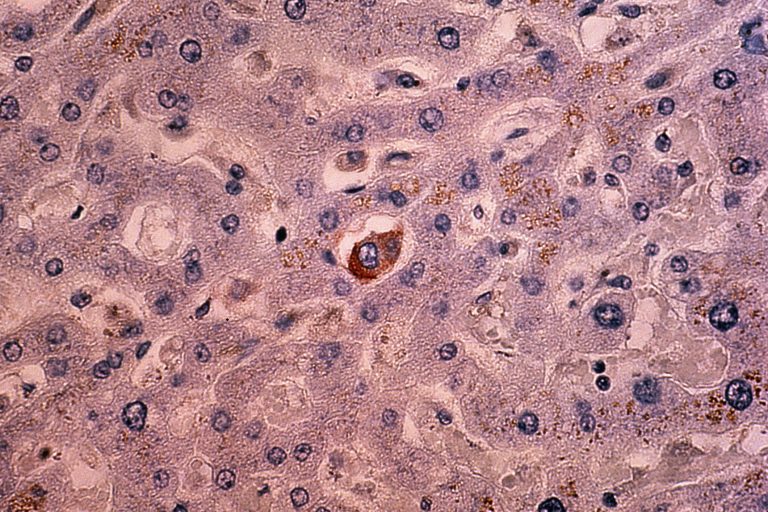
Triple negative breast cancer is one of the most difficult types of breast cancer to treat, due to the mechanism being undefined. It is negative for the three most commonly mutated breast cancer markers: HER2, estrogen receptors, and progesterone receptors. It is one of the most aggressive and deadliest types of breast cancer because it lacks common traits used to diagnose and treat most other breast cancers. This lack of definition also makes it difficult to predict the outcome of treatment.
However, researchers at Indiana University have developed a new bioassay that can better predict triple negative breast cancer outcomes, particularly the likelihood cancer recurrence and survival.
Milan Radovich, Ph.D., and Bryan Schneider, M.D., discovered that of women whose blood plasma contained genetic material from a tumor (circulating tumor DNA known as ctDNA), 56% were likely to be cancer-free two years following chemotherapy and surgery. Patients who did not have ctDNA in their plasma had an 81% likelihood to not have cancer return after the same amount of time. The researchers recently presented their findings at the San Antonio Breast Cancer Symposium.
This study, a part of Indiana University’s Precision Health Initiative Grand Challenge for triple negative breast cancer, also examined the impact of circulating tumor cells (CTC), live tumor cells released from tumors into the surrounding blood and lymph, on recurrence.
“What we found is if patients were negative for both ctDNA and CTC, 90% of the women with triple negative breast cancer remained cancer-free after two years,” said Radovich, who is lead author of this study.
The two researchers, along with colleagues from the Hoosier Cancer Research Network, based their findings on analyzing the plasma from blood samples of 142 women with triple negative breast cancer, at stage I, II or III. These women had previously undergone chemotherapy prior to surgery, and were participants in another study testing genomically directed therapy. When doctors used FoundationOne Liquid to test for ctDNA levels, 90 of the women tested positive and the remaining 52 were negative.
Detection of ctDNA was also associated with poor overall survival. Specifically, the study showed that patients with detectable levels of ctDNA were four times more likely to die from the disease when compared to those who tested negative for ctDNA.
The authors say the next step is a new clinical study expected to begin in early 2020, which leverages this discovery to enroll patients who are at high risk of breast cancer recurrence to evaluate new treatment options for them.
“Just telling a patient they are at high risk for reoccurrence isn’t overly helpful unless you can act on it,” said Schneider, who is senior author. “What’s more important is the ability to act on that in a way to improve outcomes.”
Radovich says each triple negative breast cancer case is unique. “Each one has its own set of mutations that cause that cancer and drive it and it’s really through advances in precision medicine that we’re able to tailor therapy the best we can to treat these patients. Moving forward, what we know is that the technology is rapidly advancing. Our ability to detect the circulating tumor DNA is actually quite good now, but it’s getting better even with advances in technology.”
“We were able to actually look at both in this case, how ctDNA and CTCs may work together to determine which patients will relapse and which will not,” said Radovich, who also said the capability to examine a patient’s plasma for tumor mutations has only been around for the past three years.
“What I think we’re proud of here at IU is that we’re already applying this for clinical care. We’re using this actively for our patients here at the IU Simon Cancer Center, as well as in clinical trials and we’re proud that we’re really providing our patients the most cutting-edge technology available on the planet.”
Doctors and scientists aren’t the only ones who are excited by the latest breakthrough in triple negative breast cancer.
Nadia Miller, a 12-year triple negative breast cancer survivor and president of Indianapolis-based breast cancer advocacy group Pink-4-Ever, says she and the community are excited about the implications of the discovery as well.
“Specifically for patients, and then just what the researchers are doing, it gives us very intentional data to use for the recovery and the survivorship of a person’s life,” said Miller. “So I think what they are doing is just laying the foundation for years and years to come. The community’s response to this is that they’re hopeful. They’re hopeful to see what’s next and just really excited about this groundbreaking information.”
She went on to say, “This is a huge leap toward more favorable outcomes and interventions for triple negative breast cancer patients.”











